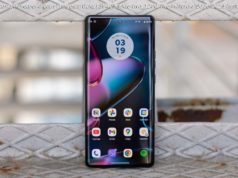Migrate all your iPhone information to Google and understand what’s different.
You’re finally ready to take the plunge.
Nope, not marriage, a career change or quitting smoking.
I’m referring to hopping over from iPhone to Android, in search of greener pastures. Whether you’re fed up with Apple’s limiting iOS platform, poor battery life, or perhaps you just want a lot more selection in devices – including Google’s just-revealed Pixel 2 (from $649) or Pixel 2 XL (from $849) – you’re ready to jump ship.
Before you do, however, you’ll want to properly migrate all your iPhone information over. And there are a few things you’ll need to know about Android, too.
This column can help you out with both challenges.
You probably don’t want to manually set up a new phone from scratch, as you’ll want to easily import your existing phone’s contacts, calendar, notes, messages, web bookmarks, and so on.
Thankfully, Android has a way to automate this process – even if you’re switching from iOS to Android – so don’t ditch your iPhone just yet.
The first thing you’ll want to do is download Google Drive to your iPhone. You’ll find it in the App Store. Sign in with your Google account (such as the email you use for Gmail, and your password). If you don’t have a Google account, create one. It’s free.
Once you’ve logged into Google Drive on your iPhone, go to Menu>Settings>Backup, and select what content you want backed up. Now tap “Start Backup.” Make sure your iPhone is plugged in for power, and you have a strong Wi-Fi connection as Google will temporarily upload your info to the cloud. This process can take a few hours, depending on how much info you have on your iPhone.
Enter your Google account info on your new phone (you’ll be prompted to do this when you set it up for the first time), and be sure it’s the same Google account you signed into on your iPhone (in case you have multiple accounts). Once you do this, wait a while as it will transfer your selected info to your new phone. Your Android device should be connected to Wi-Fi and plugged in for power, and wait for this process to be completed.
It may take you a while to find everything, but it’s here. Access your photos in Google Photos. Your iPhone contacts are in the Contacts app. Look at your events in Google Calendar, and so on.
If you run into any snags, check out android.com/switch.
Before you sell, trade or donate your old iPhone, be sure to turn off iMessage, as you won’t be getting these messages on your Android phone. Your iPhone-owning friends will need to text you or use another instant messaging app. (Tip: if you own an iPad or iPod touch, you can still read and respond to iMessages there.)
As your apps won’t be carried over from iPhone, it’s now time to go to Google Play on your new device and download all your favorite apps. Many (but not all) will be available for Android, but paid apps will likely have to be bought again. You’ll need to sign into your accounts once again, too, such as Facebook, Dropbox, Uber, and so on. But all your Google apps will be preinstalled on Android, including Gmail, Google Maps, and YouTube.
More: Google picks best Android apps with awards
More: Google to stop scanning Gmail for ad targeting
While it might draw ire from some readers, there’s something you need to know: Android isn’t as easy to use as iPhone. (And yes, I’m an Android user.)
There’s a learning curve you’ll need to get over. But once you do, it’s well worth it. Why? With Android, you’ve got virtually limitless customization options (including fun widgets and more keyboards to choose from), better multitasking abilities, a smarter personal assistant, more apps, expandable storage in most models, and a greater selection in devices.
Consider the following tips to mastering your new device:
· Keep the box to your new Android phone, just in case you need to return it or if you decide to sell or trade it in for a newer model, in the future. It’s always a good idea to have the box to your smartphone tucked away somewhere. If you choose to keep your old iPhone, there are some uses for it, such as turning it into an alarm clock, home video surveillance cam, baby monitor, extra drive to hold files, and so on.
· As previously mentioned, you won’t have access to Apple-exclusive apps on your Android phone (such as iMessage). That also includes FaceTime for video calling. Instead, you’ll have to use Skype or Google Duo, or other video apps. Read reviews from Google Play before you download, and talk to Android owners about what they like best.
· Arrange the apps on your home screen however you like. You can somewhat mirror what you iPhone had, with four of your most used apps on the bottom of the home screen, but Android will let you add an extra one, too. You can also open two apps at the same time, split-screen style, such as watching a video on the top half of the screen, while browsing the web on the bottom. How you pull this off varies between Android devices.
· Not found in iOS, placing “widgets” on a home screen gives you info at a glance that a simple icon can’t, such as a calendar app that shows you appointments from that day, or a weather widget that gives you temperature and precipitation info without having to open the app.
· Just like iOS, swipe down from the top of the screen for quick access to settings and notifications. Swipe left or right to access all your apps. You might want to group them into folders. Press and hold an app and then slide it to another page, if desired. This process should be familiar to you. Running out of storage for apps or media (such as songs or photos)? Your Android phone might take a microSD memory card, usually in the same tray as the SIM, or you can insert it into the side or back of your device.
· What you might need to get used to are the small icons (or dedicated buttons) near the bottom of the screen, on each side of the home button or icon. One will be to open all existing apps, perhaps to quickly access or close one (similar to double-tapping the iPhone home button). The other icon or button is a “back” button – something iOS doesn’t have at all.
· If your previous life was synced through iCloud, you’ll have to find another cloud provider to link everything together. I’d recommend Google Drive, which is what you likely used to migrate your iPhone info into your new Android device.






